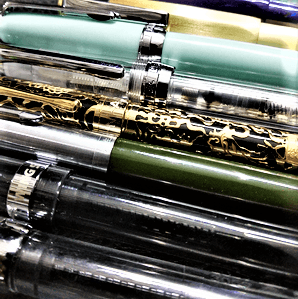
Chinese Fountain Pens – random thoughts about my latest crop
Fountain pens made in China never cease to fascinate me. Not the way the solid engineering of German pens, or the fine excellence of Japanese pens or the pukka artistry of British pens, or even the handcrafted brilliance of Indian pens takes the breath away, but fascinate they do, none the less.
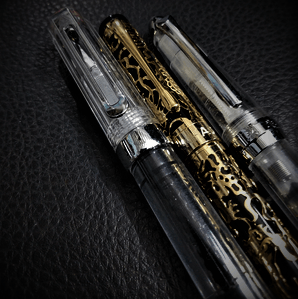
They fascinate with their ability to be mass produced. They fascinate with their sheer disregard for intellectual properties and design rights. They fascinate with their steady refusal to brand themselves into niches, little comfort zones they can all their own for posterity and more. They fascinate with their nihilistic rejection of their own abilities to create their own, to create the “new” as opposed to building the superstructure of their obvious expertise on flimsy foundations of “lifted” ideas and borrowed techniques. And they fascinate with their quality at the price points they generally offer their products.
Mind you, I am not talking about products that are picked randomly off the sidewalks. I am talking about fountain pens that are “decently” priced and are of acceptable quality. Products that could have held out on their own, but still mimic their rich cousins. It is as though they derive some inexplicable, even perverse pleasure is being a lowly concubine, when they could easily have been the queen – sceptre and crown and all, reigning supreme in the connoisseur’s heart.
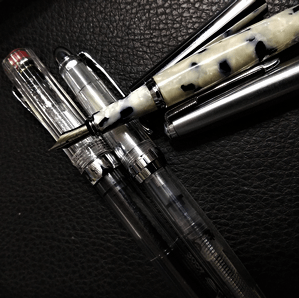
Take the latest lot of Fountain Pens that I just acquired for example. All of them write well – some, extremely so. They are all functional pieces, with built qualities that may not be jewellery class, but are certainly good enough to be carried in the pocket and put to daily use. I guess there is a certain kind of safety in numbers and the Chinese manufacturers, who must be churning out these pieces in batches have perfected the art of attaining quality norms through relentless pursuit of figures.
What is even more surprising is the relative ease with which these fountain pens can be bought. I purchased them from a site where they showed me the prices in INR and accepted the payment, again in INR. The packages were delivered within a week – surprise of surprise, by Indian Post. Hassle free and fast, not something I can vouch for the Indian pen makers, who are not only terribly callous as far as customer relations and sales support are concerned, but also make it a point that the worst possible courier services are used almost as if requesting you not to bless them with your patronage, ever!
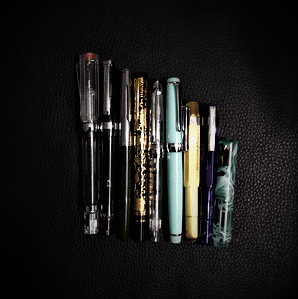
But back across the Great Wall of China. What needs to be mentioned is the packaging most of these pens have come in – gone are the days of cheap plastic and tinsel, the packages too are now presentable, often resembling the original, but passable.
And look at the spread – Wingsung, Jinhao, Delike, Lanbitou, FuliWen, Moonman all names that are known. All names that we know but know so precious little about. It is especially at times like these that one must be tempted – I certainly am – to make a trip across the Great Wall and into their Forbidden City, where the Chinese make their fountain pens, far away from the prying gaze of the world.
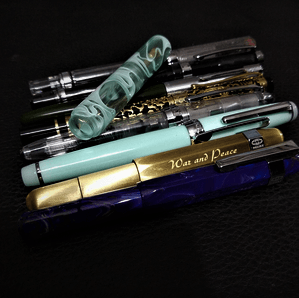
There is another overwhelming temptation that engulfs me at times like these – to put the Chinese pens next to the ones – the “originals” that apparently “inspired” them. Putting them side by side and snapping pictures, I guess would be fun, but what puts me off is the obvious perversity that is involved. Yes, I have put the Chinese pens next to their original cousins, have studied them minutely, even written with them extensively, and every time only one thought has clouded my heart – if they are obviously so good in replicating, why don’t they go for creating their own?
That brings me to another question that has me flummoxed. A number of questions, in fact. If we in India were equally good in and around the 1950’s and the 1960’s in replicating fountain pens, why did we fail to notch up the kind of export figures that the Chinese did? Why can’t we match them even now in terms of quality, price and numbers? (obviously the comparison here should be restricted to like products and our well acknowledged and quality hand-made pens are strictly not comparable to their mass-produced ones).
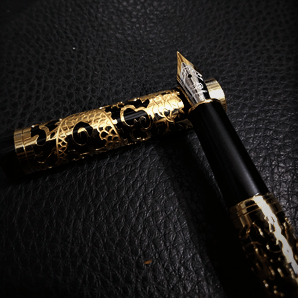
Why did we, despite a thriving mass market and a legacy of manufacturing capabilities (not to mention a well-developed fountain pen industry) fail to produce a Hero Corporation of our own?
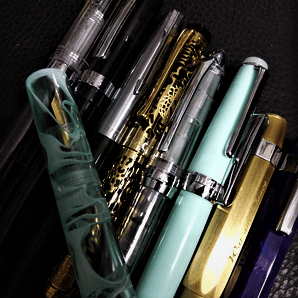
The Pens that appear in the pictures are:
Delike Classic Alpha Fountain Pen Extra Fine 0.38mm Nib Metal Ink Absorber
Delike Elegant 0.38mm EF Bent Extra Fine Nib Fountain Pen Silver Clip
Wingsung 618 0.5mm Fine Iridium Nib Piston Fountain Pen
WingSung 9133 Fountain Pen 0.5mm Fine Nib
LANBITOU 3059 Piston Transparent Fountain Pen 0.38mm/0.5mm Fine Nib
Moonman Wancai Mini 0.5mm Fine Nib Transparent Mint Pattern Fountain Pen
FuliWen Submarine 0.5mm Iridium Nib
Luxury Wingsung 698 Piston Fountain Pen 0.5mm Soft Nib
Delike Resin 0.38mm Iridium Extra Fine Nib
Wingsung 601 Piston Fountain Pen Iridium Point 0.5mm Fine Nib Silver Cap
Aluminum Alloy WINGSUNG 6359 Fountain Pen Fine Nib 0.38mm

Note, the JINHAO 5000 Black and Golden Medium Nib Fountain Pen Dragon (Embossed) was put in the batch deliberately. This is what could have been, but isn’t.

The questions that you asked tickle my brain nerves but alas, there are no definite answers to them! They are famous for what they are famous for.